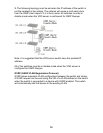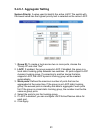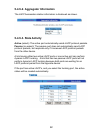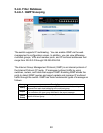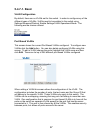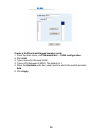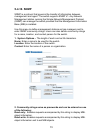66
5-4-7. VLAN Configuration
A Virtual LAN (VLAN) is a logical network grouping that limits the broadcast
domain. It allows you to isolate network traffic so only members of the
VLAN receive traffic from the same VLAN members. Basically, creating a
VLAN from a switch is logically equivalent to reconnecting a group of
network devices to another Layer 2 switch. However, all the network
devices are still plugged into the same switch physically.
The MIL-SM801P, MIL-SM801G, and MIL-SM800P switch series support
port-based and protocol-based VLANs. In the default configuration, VLAN
support is enabled and all ports on the switch belong to the default VLAN.
VID is 1.
NOTE: The default VLAN can’t be deleted.
Support Port-based VLANs (IEEE 802.1Q VLAN)
The IEEE 802.1Q specification is the standard for Port-based Tagging.
Therefore, it is possible to create a VLAN across devices from different
switch suppliers. IEEE 802.1Q VLAN uses a technique to insert a “tag” into
the Ethernet frames. The tag contains a VLAN Identifier (VID) that indicates
the VLAN numbers.
Support Protocol-based VLAN
In order for an end station to send packets to different VLANs, it has to be
either capable of tagging the packets it sends with VLAN tags OR be
attached to a VLAN-aware bridge. The VLAN-aware bridge must be
capable of classifying and tagging the packet with different VLAN ID. The
classification and tagging of the packets is based on default PVID and other
information about the packet, such as the protocol.



